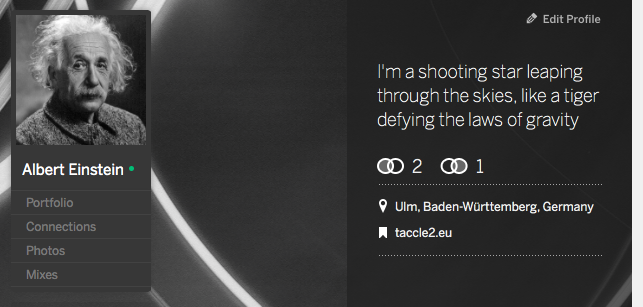Crossing boundaries at the Bremen International VET conference – Part One: Learning Layers and Employ-ID work together
My recent blog was about a field visit to training centre Bau-ABC (2.9.2015) in the context of the fieldwork of the EU-funded Learning Layers (LL) project. The very next day the ITB and Pontydysgu teams, together with Raymond Elferink (RayCom) presented Learning Toolbox at the Bremen International Conference on Vocational Education and Training (VET). This post will focus on this session, the next one on other sessions of the conference.
Insights into the Bremen Conference
Firstly, it is worthwhile to say some words of the Bremen International VET Conference. This conference has been initiated as part of an international project of ITB that has been launched by the University of Bremen (in the context of its Excellence University framework). The project studies transfer of the dual VET model by German companies working abroad (in China and in the USA). As a part of its work program the project has committed itself to organise international conferences. This one was the first of its kind and focused on crossing the boundaries and learning from each other. The conference was designed to keep it rather small (about 100 participants at the maximum) and to enable more discussion and more participative sessions (see below). I will give more information on the contents in my second blog post on this conference.
Presenting Learning Toolbox in the Bremen Conference
For the Bremen Conference we had prepared a Research Workshop session to avoid the typical impression of ‘talking heads’ in the front and passive listeners in the audience. Therefore, we kept the presentations rather short and then divided the audience into two working groups to discuss the presentations and to have some hands-on exercises. Here some snapshots on the contributions and activities:
Firstly, I gave a quick introduction to the Learning Layers project and to the script of the session. In this context I emphasised the continuity of themes between the participative design of Learning Toolbox (LTB), the functionality that is coming up in the LTB, the capacity building measures initiated in the training centre Bau-ABC and the lessons to be learned from the parallel European project Employ-ID (and its piloting with Massive Open Online Courses (MOOCs).
Secondly, Werner Müller (ITB) gave a presentation on the co-design process that led to the development of the LTB. He referred to the starting points in the sectoral pilot contexts (construction work not having the reputation of high-tech occupations). Then he gave a picture of the co-design activities, different phases of work and a general characterisation of LTB as a framework for tools and apps linked to each other in mobile devices.
Thirdly, Raymond Elferink (RayCom) gave a live demonstration on the LTB Beta version that we had just presented and tested on our field visit to the training centre Bau-ABC the day before (see my previous blog post). Alongside the general presentation (of the tile structure of the framework and of the process of creating focused stacks) he drew attention to the newly created stacks of the Bau-ABC trainers for their respective trades.
Fourthly, I (as a replacement of Melanie Campbell from Bau-ABC) gave a presentation of their training programs for their staff. This presentation drew attention firstly to the project-initiated training that equipped the Bau-ABC trainers with general know-how on multimedia and web tools and enabled them to produce and edit video material for their training. In the second part the presentation outlined the new training model initiated by the Bau-ABC trainers themaselves. In this new model they tried to ensure a flexible training arrangement that enables all trainers to work their way through parallel “theme rooms” that make them fit to use the LTB in their own training activities.
Fifthly, Graham Attwell informed of the parallel European project Employ-ID and its work to support professional development and mastery of changes in Public Employment Services (PES). In this context the research & development worked with development of labour market data for guidance and counselling purposes. At the same time the project developed new training models for staff members in PES with limited possibilities to participate in traditional training measures. For this purpose the project developed an adapted version of Massively Open Online Courses (MOOCs) with limited participation and limited openness but with similar technologies for online learning. Crucial for this pilot was the emphasis on interactivity and changing roles between trainers and learners. Here, the key point in this report on this recent pilot is to demonstrate the usability of these technologies for well-thought pedagogical pilots that emphasise the use of MOOC platforms as Social Learning Platforms.
After the presentations we split the audience into two working groups. In one group the participants had the opportunity for hands-on tests with the LTB (with Raymond Elferink and Dirk Stieglitz as tutors). In the other group we discussed possible success factors and criteria for acceptance in the above presented training models (of Bau-ABC and Employ-ID). Since we had half an hour for these sub-sessions, the participants could engage themselves in the testing and/or give freely their views on the training models. This was very much appreciated by all parties involved.
I guess this is enough of the main session of the Learning Layers project in this conference. In the next blog post I will give insights into other sessions in the Bremen International VET Conference.
More blogs to come …

